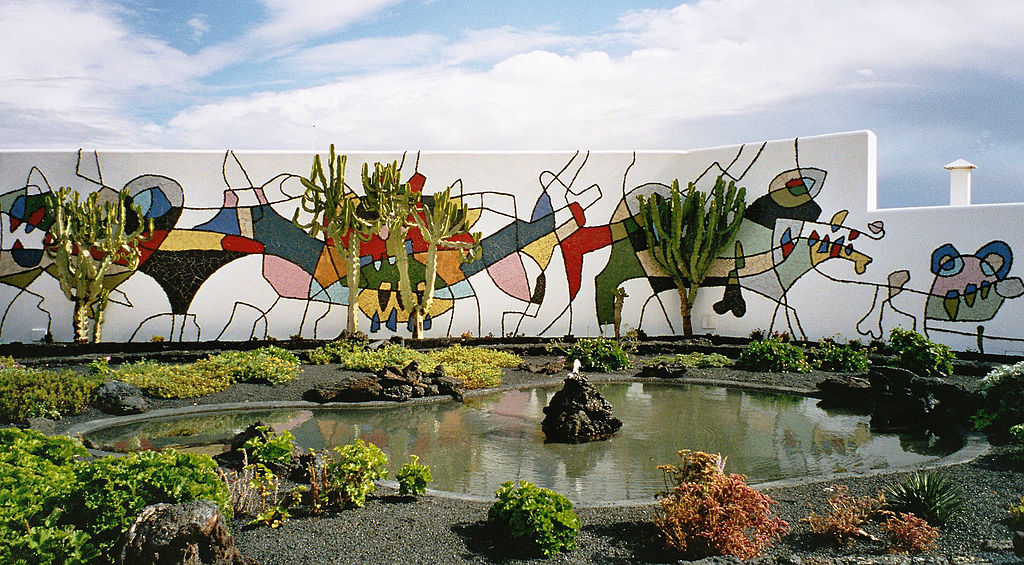Manrique (1919 – 1992) was born in the island’s capital Arrecife. He completed his studies at the Academy of Fine Arts of San Fernando in Madrid (where he lived between 1945 and 1964). 1964 saw him move to New York where he lived and exhibited for a short period. In 1966 he returned to his native island, roughly around the same time as tourism development had begun to gain momentum. It is in this period where he began to promote a model of intervention on the environment through sustainability, seeking to safeguard the natural heritage and cultural insularity of Lanzarote. This model was instrumental in the declaration of Lanzarote as a Biosphere Reserve by UNESCO in 1993.
You can’t go far on Lanzarote as it is today without seeing the influence of César Manrique. This multi-disciplinarian’s work defines the land. In his lifetime he was a painter, sculptor, ecologist, curator of monuments, construction counsellor, planner of urban complexes and a landscape and garden designer.
Sites of note to visit on the island include: The César Manrique foundation (César’s former home, pictured above). Jameos del Agua (Pictured above, concert venue/nightclub in a cave). Casa Museo del Campesino (next to this stands one of Manrique’s most famous sculptures named “Fecundidad”). Mirador del Rio (built in 1973 overlooking the neighbouring island of Graciosa). Jardín de Cactus (a cactus garden home to over 1,100 different varieties of cactuses near Guatiza. Taro de Tahíche (Manrique’s house near Teguise). Museo Internacional de Arte Contemporaneo (International Museum of Contemporary Arts in Castillo de San José featuring the paintings of Miró, Millares, Mompó, Oscar Dominguez, Gerardo Rueda, Eusebio Sempérez, Augustín Cárdena and Manrique).
